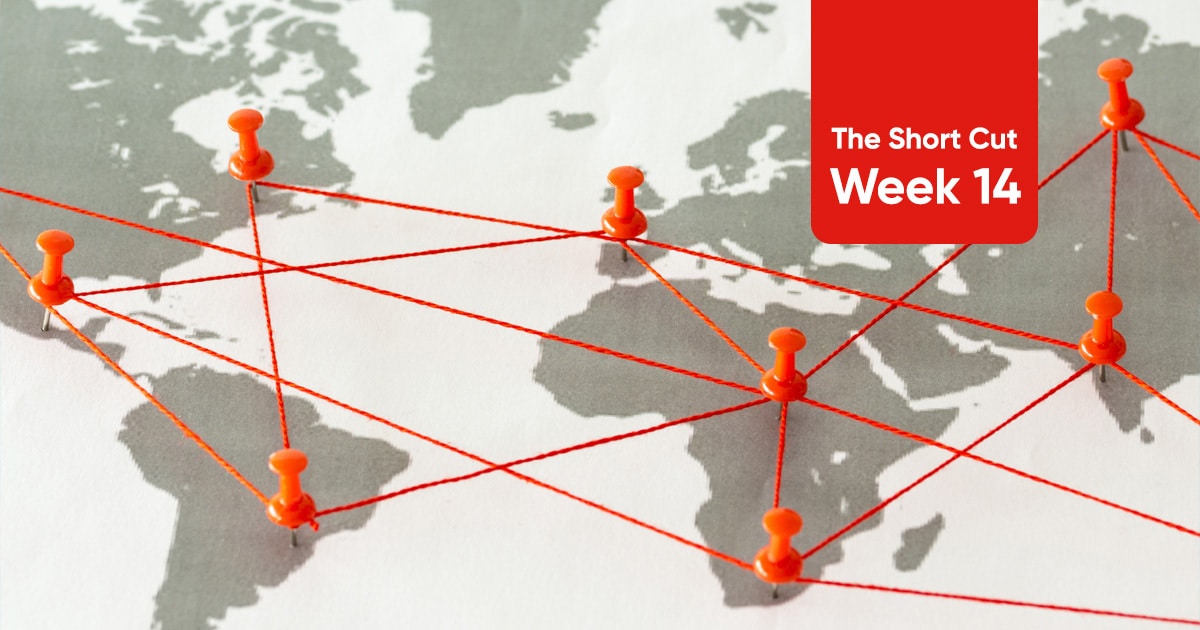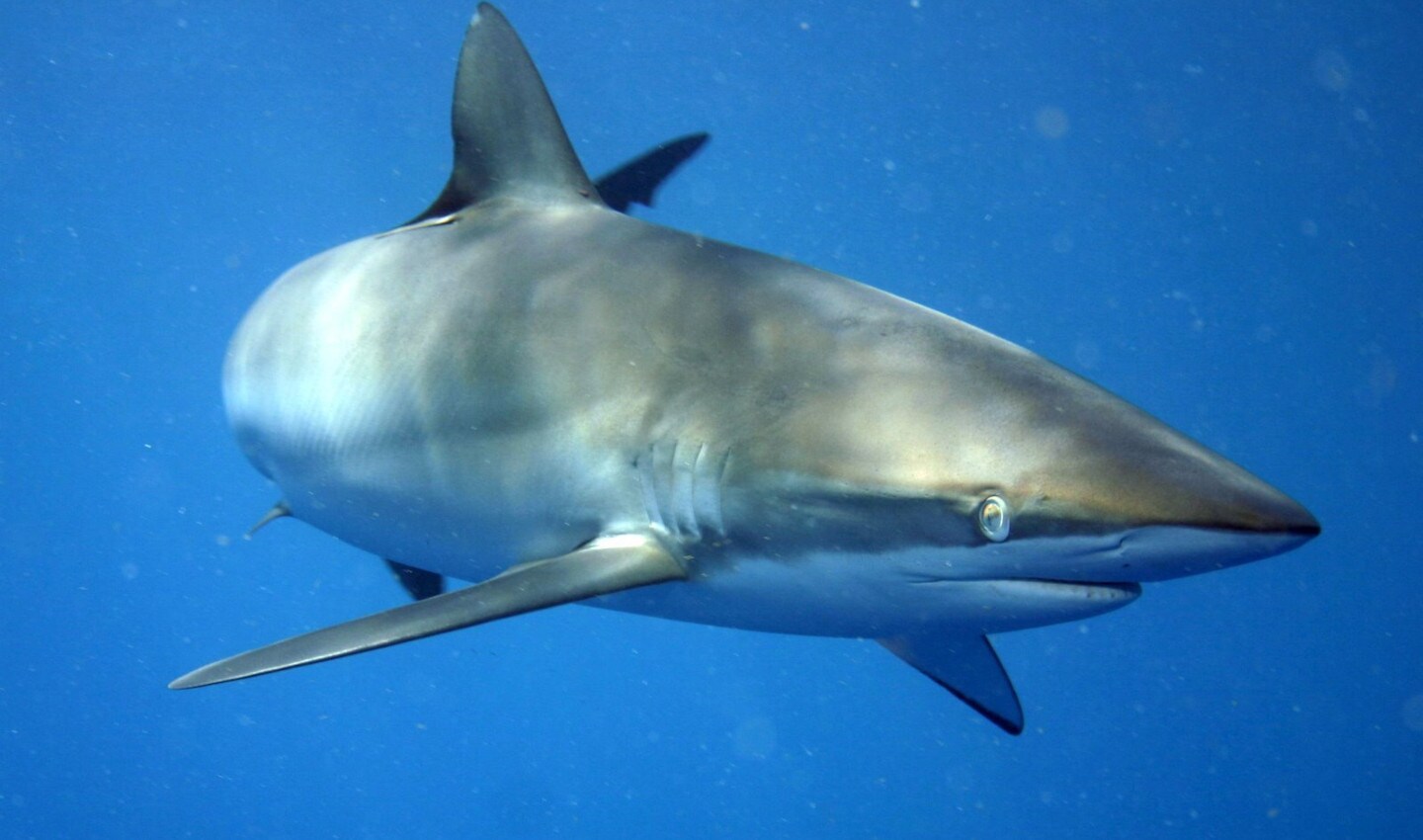
Welcome to another episode of The Short Cut. This week we share some of the most interesting stories in mapping, location tech and automotive that grabbed our attention over the past seven days. Stories include maps used for pleasure, play, visualizing the abstract and for marine conservation. Read on for all the stories.
Mapping shark journeys for conservation
TomTom spends a lot of time using things like sensor derived observations (SDOs) and floating car data (FCD) to track vehicle movements around the world. This data is then used by city planners and infrastructure designers to build smarter, more liveable cities. Similar principles of tracking movements are being used by scientists to protect sharks.
A team of scientists tracked nearly 50 silky sharks using satellite trackers near the Ecuadorian coast. They found that the sharks are travelling further than previously thought and are spending long periods in unprotected waters. In other words, the sharks are at a greater risk of illegal or unregulated fishing where they can be affected as by-catch (collateral damage in commercial fishing).
 The silky shard is a threatened species of shark that frequents tropical waters around the world. It's named silky after its smooth skin. Here photographed at Jardines de la Reina, Cuba. Credit: Wikimedia CC.
The silky shard is a threatened species of shark that frequents tropical waters around the world. It's named silky after its smooth skin. Here photographed at Jardines de la Reina, Cuba. Credit: Wikimedia CC.Placing trace lines of their journeys over maps of protected areas, scientists deduced that protected waters and conservation zones won't be enough to protect the species. Ultimately, better management of the waters is needed. Read the full story on Mongabay.
The New York International Auto Show is back
Some people are saying that the days of the auto show are numbered. Back in 2017, Reuters posted an article titled, The Death of the Car Show. In the years after, the Frankfurt Motor Show rolled up its carpet and turned off its rotating vehicle display stands for the last time. And now people are asking if the Paris Motor Show is next.
Whatever the global trend might be, the New York International Auto Show is seemingly still going strong. And with fewer shows to whet our automotive appetites, get over to Carscoops and check out their top picks from the event.
As ever, it's EV and screens a plenty.
Hacker lifts lid on Tesla's maps
One of the most infamous Tesla hackers dove into the tech behind Tesla's maps and was delightfully surprised at what they found.
Twitterer Greentheonly found that Tesla isn't relying on entirely conventional means for suggesting routes to drivers. Green found that Tesla combines data from its fleet and cloud-based maps service to ensure drivers get the most up-to-date information about road closures, stop signs and so on. With that information, they can get optimal routing and safety information. It's essential stuff when it comes to its ADAS tech, and demonstrates the potential and opportunity for elements of real-time mapping.
Tesla-focused media outlet, Not a Tesla App, reported on the hack on Tuesday. You can see the original tweet below.
Maps for visualizing population density
Maps themselves can be quite abstract, especially when you start digging in to the data behind them. At their core, though, maps are just a visualization or representation of the world built from data. With that in mind, why should we stop at visualizing the world as we see it? Why not isolate specific types of data to make visible more abstract characteristics of our world like movement or population density?
That's what data technologist Spencer Schien is doing.
In an interview with creative cultural magazine My Modern Met, Schien shows off some of his most striking map visualizations, which compare population densities in a number of U.S. cities.
Schien's maps use tall bars to represent how densely populated an area is, this is then overlaid on a recognizable geographic map of the U.S. state. Almost like a topographical map. The maps were created using publicly available data and R for programming.
Some states have vast expanses where there are few people and city areas that are heavily populated. But visualizing data this way makes it clear how much busier and more densely populated some parts of the U.S. are compared to others. Check it out here.
Long read: Everyone should know about the work of John Hanke
Maps aren't just about getting from A to B. As we saw in one of the stories above, they can be used for delivering vehicle safety systems, but they have applications far beyond travel and motor vehicles.
Hanke has worked for some of the biggest names in tech and affected the world of location tech like few others have. Tom Regan for The Guardian wrote a feature on Hanke and his career and highlights how Hanke sees virtual maps as "portals to play."
If you didn't know, Hanke is founder and CEO of Niantic, the company behind Pokémon Go, one of the best examples of how to use maps and location data for play and fun.
If you're looking for something to read over the weekend, make it this article.
 To the delight of millions, Pokemon Go blended maps, location data and augmented reality to bring the game to life. It overlayed the Pokemon world onto a base layer map of Earth. Credit: PeakPx.com, CC0.
To the delight of millions, Pokemon Go blended maps, location data and augmented reality to bring the game to life. It overlayed the Pokemon world onto a base layer map of Earth. Credit: PeakPx.com, CC0.That's all for this week's edition of The Short Cut, be sure to check back in another couple of weeks for more of what we're reading in maps, EV and the future of location tech.
People also read
)
How TomTom helps ride-hailing users find their way around airports
)
How routing algorithms prioritize safety over speed in rural Finland
)
More than 20 years of mobile mapping, here’s how it began
)
Mapping for color blindness: High contrast dedicated color schemes
* Required field. By submitting your contact details to TomTom, you agree that we can contact you about marketing offers, newsletters, or to invite you to webinars and events. We could further personalize the content that you receive via cookies. You can unsubscribe at any time by the link included in our emails. Review our privacy policy. You can also browse our newsletter archive here.
)